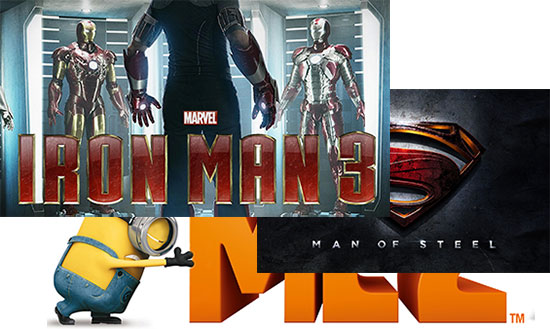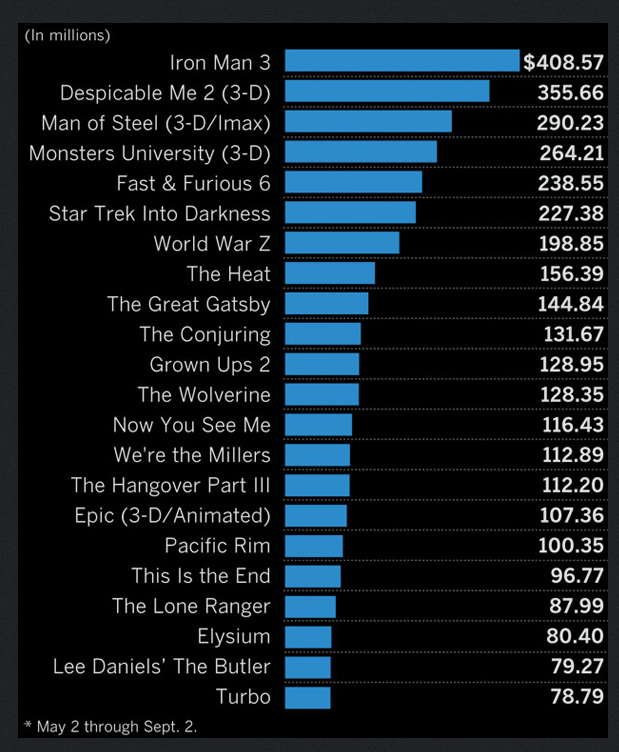Spend any amount of time reading comments at a movie news website and you’ll notice endless opinions lamenting the end of creativity in Hollywood. Wailing over the latest reboot to a classic film that didn’t need a reboot. Weeping at the next prequel to a movie we loved, that contains absolutely no tension because we already know how it ends. Gnashing of teeth at studio executives working on a sequel to a film that already has three films and is growing more tired with each entry.
How do I know there is so much anxiety over this? Because I’m one of those vocal people that bemoans the lack of unique and creative ideas whether it be movies, books, comics, or even video games. But as much as I’d love to have movie studios and publishers take more risks with untested and innovative projects, I’m afraid the general public has seriously out-voted me with their dollars.
Take a look at this graphic that shows the highest grossing films so far in 2013:
Notice anything familiar? In the top five alone, we have four sequels and one reboot. Of the 22 films listed here, over 2/3 are either sequels or reboots or based on existing properties in another form of media such as books. So why is Hollywood repackaging the same things over and over to us?
Because we buy them. They are a safe bet. For all the complaining from audiences about the lack of creativity, when Hollywood takes a risk on a new property, it won’t even come close to what they can make from an established franchise. The numbers prove that although we say we want more creativity, we don’t support it at the same level.
Why is Hollywood Obsessed with Blockbusters?
Vulture has a great article that describes this phenomena: Why Hollywood Is Caught in the Blockbuster Trap — and Won’t Break Free Anytime Soon. The bottom line is that they are running a business, and businesses want to limit risk as much as possible, and by focusing on established properties, they have the best chance to make the highest profits.
The Paradox of Creative Projects
There’s a bit of an ironic twist to new properties that find success. Pacific Rim, for instance, is a film this year that has a fun and interesting take on the monster / robot genre while not being based on any specific previous film or book. It did well at the box office (although not as well as a sequel would have). But here’s the ironic part. After Pacific Rim was released, fans turned out in droves to talk up the film online. They pleaded for movie-goers to get out and watch the film to support it. Why? So that it could get a sequel!
It’s all about the franchise.
When Will this Trend End?
Not anytime soon. The model is still working. In today’s market where more media is competing for your limited entertainment dollars, safe bets are the first priority. George Lucas and Steven Spielberg have been saying for a while now that what it will take to break this trend is a couple of big budget failures, all in one year, that cripple the studios and force to them to take a look at this business model.
When you have all your eggs in a few baskets and they crack, you are forced to re-examine your strategy. The hope is that the long term trend will be more of the big budget spread across smaller films instead of spent on one giant tentpole. This gives room to take smaller risks that have a higher chance to, at least, break even.
The best way to get Hollywood (and any other media publisher for that matter) to produce more new creative ideas is to vote with your dollars. Support the things that are new and innovative. Avoid the sequels, reboots, and prequels if you don’t want more of them.

